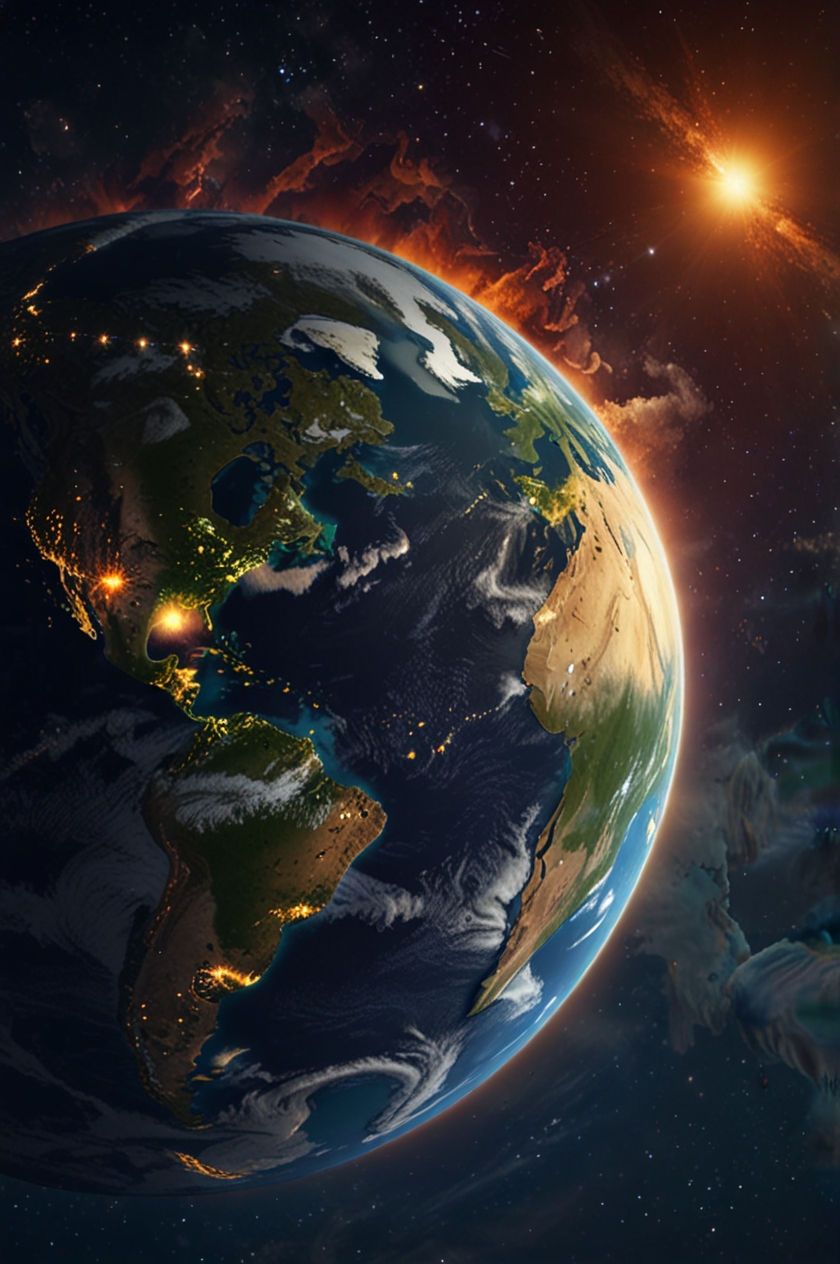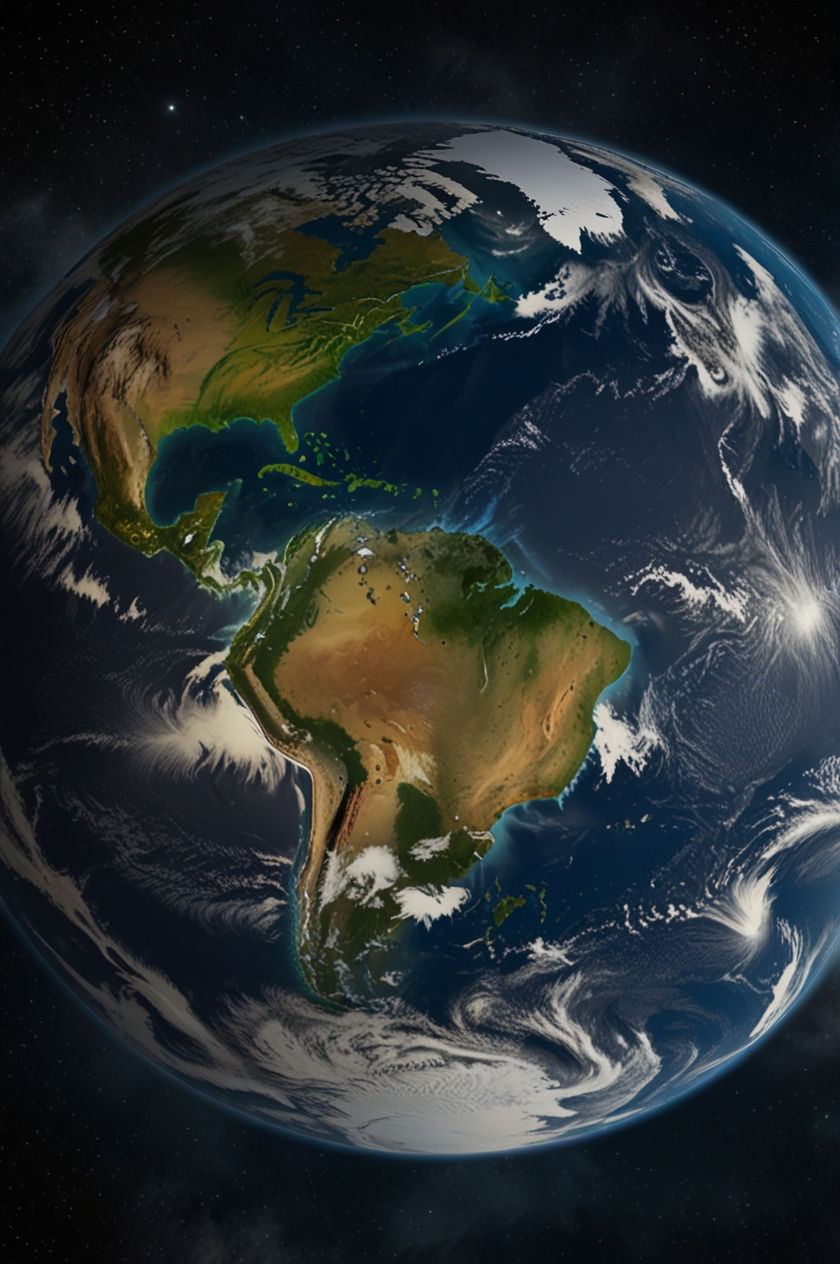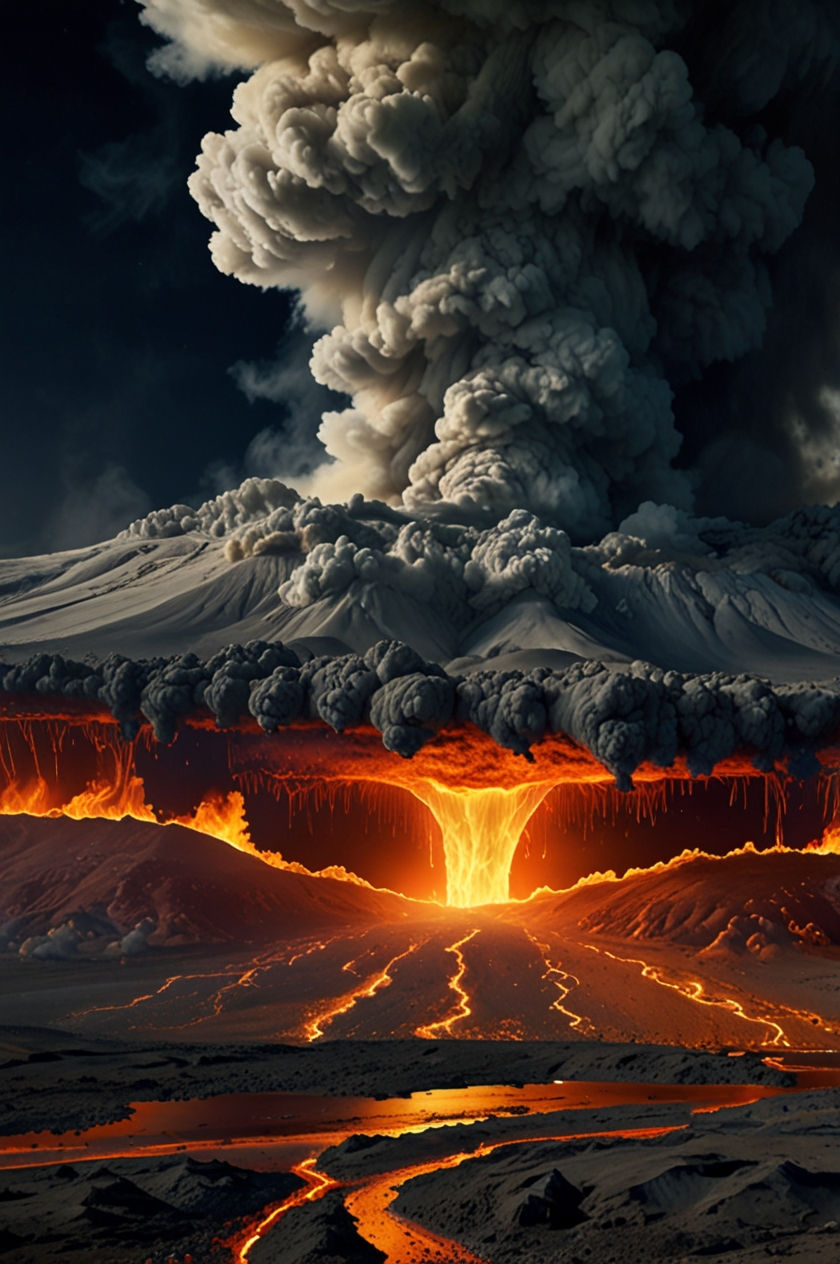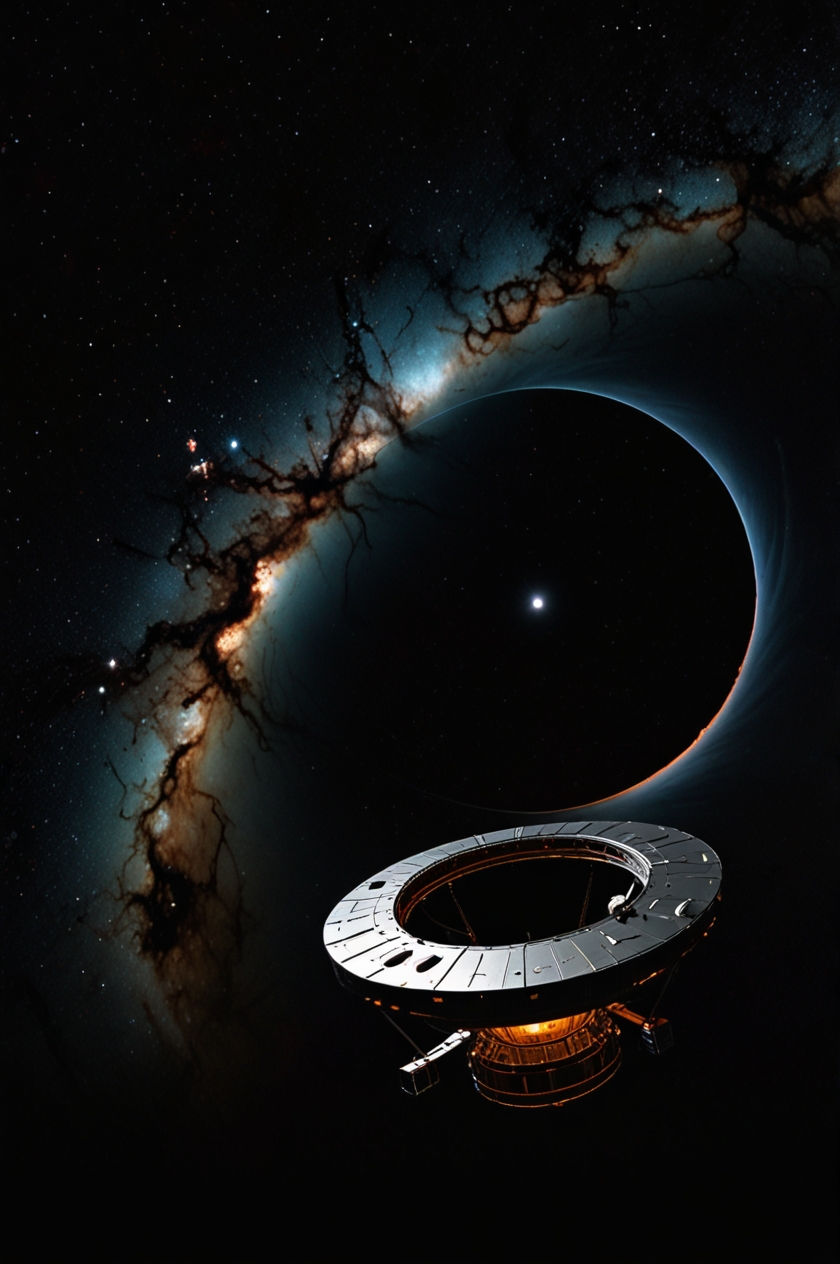Beyond The Fire To a New Earth
- AI it News

- Aug 19
- 5 min read
How We Might Survive Earth's Ultimate Rebirth?

Imagine for a moment, if you can, a future so grand and terrifying that it forces humanity to gaze not just centuries, but millennia ahead. A future where the very ground beneath our feet becomes a liquid, the sky a cauldron, and the sun, our life-giver, turns into the architect of our planet's undoing. This isn't a mere apocalyptic fantasy; it's a chilling thought experiment, a testament to what cosmic forces could unleash, and how, against impossible odds, the spirit of humanity might still find a way to endure.
We live our lives on Earth, comforted by its apparent stability, rarely contemplating the titanic forces constantly at play within and around it. But what if that stability was an illusion, its protective shield faltering? What if the Sun, our benevolent star, began to strip away our magnetosphere – that invisible, vital shield that deflects deadly solar winds and preserves our atmosphere?
This isn't a gradual erosion over eons. Imagine it as a swift, relentless assault. As our planet’s magnetic field weakens, not only are we exposed to lethal radiation, but a far more profound and terrifying chain reaction begins. The Earth’s very core, the dynamo generating that protective field, starts to weaken in concert. This isn't just about compasses spinning wildly; this is about the fundamental stability of our world unravelling.
"The greatest challenge to the human spirit is not an external enemy, but the internal fear of what we cannot control," a wise voice might have whispered in those final days. And control, in this scenario, becomes a distant memory.

With a weakening core comes a dramatic, accelerated pole shift. Not the slow geological creep we’ve observed in the past, but a rapid, violent reorientation of our planet's magnetic axes. This isn't just a navigational nightmare; it’s a seismic trigger of unimaginable scale. The delicate equilibrium of tectonic plates, accustomed to the Earth's long-standing magnetic rhythm, is shattered. Continents, once thought to drift at glacial speeds, begin to lurch, groan, and tear apart, their slow dance becoming a frantic, destructive ballet.
Picture coastlines transforming in hours, not millennia. Massive landmasses grinding against each other, or worse, pulling apart. This accelerated continental drift unleashes tsunamis unlike anything in recorded history. Waves of unthinkable height, born from ocean floors heaving and collapsing, scour entire landmasses clean of life, reshaping geography with terrifying speed. Coastal cities, then inland regions, are simply erased.

And then, the Earth’s deeper fury awakens. The release of immense pressure from the core's instability, coupled with the violent movement of continental plates, triggers a global awakening of super volcanoes. Not just one or two, but a symphony of explosive eruptions, spewing ash and dust miles into the atmosphere, darkening skies for decades, plunging the planet into a perpetual twilight. The air becomes thick with volcanic gases, the climate irrevocably altered, rendered hostile to all but the most primitive forms of life.
Life, as we know it, would be extinguished. The planet would become a crucible of fire and flood, a volatile, uninhabitable wasteland. It would take not decades, not centuries, but several thousand years for Earth to slowly, painstakingly, recover. For the atmosphere to clear, for oceans to stabilize, for new ecosystems to emerge from the ashes of the old. A rebirth, yes, but one that demands an unimaginable passage of time.
This isn't a scenario for short-term survival; it's a blueprint for the deepest form of human resilience. Faced with this insurmountable cataclysm, humanity's greatest minds and most courageous spirits would have converged on a single, audacious plan: not to fight the inevitable, but to transcend it.

This is where the truly extraordinary comes into play. A chosen population, a carefully curated cross-section of humanity's genetic diversity, knowledge, and ingenuity – scientists, artists, engineers, historians, farmers – would be prepared not for a journey across space, but a journey through time. Their vessel, an ark of profound ingenuity, would embark on a cosmic voyage designed to exploit one of the universe's most mind-bending phenomena: time dilation.
"We are travelers on a cosmic journey," as a voice might echo from the annals of that desperate age, "stardust, swirling and dancing in the eddies and whirlpools of infinity. Life is eternal." Their destination? Not a new planet, but the vicinity of a black hole. In the extreme gravitational fields near a black hole, time itself warps. For those aboard the ark, a few subjective years might pass, a period to mourn, to learn, to refine their knowledge and their very being, preparing for a future they could only dream of. Yet, for Earth, those few subjective years would translate into the passage of millennia.

This wasn't an escape; it was a cosmic insurance policy, an act of unparalleled faith in humanity's enduring spirit. They would return not to the world they left, but to one utterly transformed.
Five thousand years later, the Earth, having endured its violent geological upheaval, having purged its pollutants and reshaped its landscapes, would finally be ready for life anew. The sky would be clear, the oceans teeming, and continents settled into new, unrecognizable configurations. Forests of ancient, resilient trees might stretch for thousands of miles, punctuated by newly formed mountain ranges and vast, tranquil seas. The scars of the super volcanoes would be visible, but covered by the vibrant tapestry of a world reclaimed by nature.
And then, precisely as calculated by the brilliance of those long-dead scientists, the vessel would reappear. A ghost from a forgotten past, returning to a future it helped shape. Imagine the awe, the trepidation, the profound sense of rebirth as the chosen few, still relatively young, step onto a planet that is both their ancestral home and an alien world.
Their mandate, etched into their programming and their very souls, would be to rebuild. But not just to recreate the old world. This is humanity's second chance, purged by fire and refined by time. They would return with an unparalleled understanding of planetary forces, a profound respect for Earth's fragility, and an unshakeable commitment to living in harmony with it. The mistakes of the past – unchecked industrialization, ecological neglect, societal divisions – would be indelible lessons, guiding their every step.
This isn't just a story of survival; it's a testament to the boundless potential of human foresight, ingenuity, and our enduring will to exist. It persuades us to believe that even in the face of absolute planetary annihilation, a path can be charted, a future forged, if we dare to dream beyond our immediate horizons. It forces us to confront our fragility, but also to embrace our astonishing capacity for resilience. For if humanity can conceive of such a radical solution, traversing cosmic distances and bending time itself to achieve a rebirth, then surely, we possess the power to safeguard our present and cultivate a future worthy of such magnificent potential.
"Every end is a new beginning," and in this cosmic drama, humanity's greatest triumph would not be in preventing the inevitable, but in navigating it with audacious vision, returning from the very edge of eternity to reclaim its place on a reborn Earth. It’s a powerful reminder that our future is not written in stone, but shaped by the courage of our imagination and the depth of our commitment to life itself.




Comments